How to Grow 4C Hair to Waist Length

Over the last few years my natural hair journey has been anything but pleasant. Having gone through intense breakage due to damaged, dry and brittle hair, I never thought I would see the day that my hair would be waist length. I can tell you now, 4C hair is not for the weak. First and foremost, you must understand that no one has the same hair or genetics and so, you have to do what works best for you.
You want to learn about your hair to better protect and provide for it. Do you have low or high porosity hair? What is that? Low porosity hair means that the structure of your hair does not easily allow moisture to be absorbed into your hair shaft. This can make it harder for water or oils to penetrate your scalp. Low porosity hair repels moisture. If you have high porosity hair this means your hair allows moisture to be absorbed into the scalp easily, yet it is not able to retain moisture for long. This is because the cuticles tend to have gaps or spaces between them.

Here is a way to find out using a strand of your hair:
Shampoo and rinse your hair to remove any product buildup
Fill a glass with water
Once your hair is dry and clean, drop a single strand of your hair into the glass of water
Watch the strand to see if it sinks to the bottom of the glass or floats to the top
Related articles: Why Homemade Products Are the Future of Haircare
Related articles: How to Create Your Own Skincare Products with DIY Beauty Recipes
Low Porosity Hair: If the strand floats at the top before sinking, you likely have low porosity hair
Normal Porosity Hair: If the strand floats somewhere in the middle of the glass, you probably have medium to normal porosity hair
High Porosity Hair: If the strand quickly sinks to the bottom of the glass, you likely have high porosity hair
Genetics can play a crucial role in hair porosity—for example, both my mother and I have low porosity hair. I find that the best way to keep my hair moisturized is to apply my moisture right after sitting under a hooded dryer. With that said, let’s dive into some hair education…every human has about 100,000 hair follicles on their scalp alone.
The shape of them determines your natural hair pattern and whether your hair is straight, wavy, curly or kinky. Speaking of Kinky, have you tried, Kinkistry? Kinkistry rocks so many hairstyles for women of color, they’re the ultimate in all-natural solution. You’ll find clip-ins, wigs, wefted hair, and drawstring ponytails that blend seamlessly, all made with 100% virgin human hair accessories.
Moving right along, we have the hair shaft. The hair shaft is the visible hair that grows out from the follicle. It is made up of keratin. Keratin is a strong protein that is very resistant and is the same material your nails are composed of as well. The hair cuticle is your hair’s protective layer which prevents damage to your hair’s inner structure. Thus, giving us 3 stages of hair growth: Anagen, Catagen and Telogen.
Related articles: How to Get Celebrity Hair at Home
Related articles: Difference Between Curly and Coily Hair
THE ANAGEN STAGE: The Anagen phase is known as the growth stage because in this stage each hair bulb splits rapidly creating new hair growth.
THE CATAGEN STAGE: This period only lasts around 10 days, which is very short compared to the first. In the catagen stage, the hair transitions from active to inactive, by detaching itself from the blood supply, and the hair follicle shrinks.
THE TELOGEN STAGE: In the Telogen stage, the club rests in the roots of your hair while new hair begins to grow underneath it. Once the Telogen period is over the hair club will fall out and make space for the new hair to come through the hair follicle.
According to Scalp Micropigmentation Specialist, Amr Salem, “African American women have a lot of hair. It is long, thick and can be difficult to take care of. One of the best ways to care for this type of hair is by using natural products. As a result, they should stay away from products that are loaded with chemicals and ingredients that can damage the hair.”
Apart from natural products, Dermatologist, Ksenia Sobchak says, “I encourage my clients to use twists, loose buns and braids in less than one month. This helps stretch the hair, preventing tangles, knots and breakage. Stick to the right ingredients for your hair. For example, I like curly hair products lacking alcohol and sulfate formulations.”
Related articles: Does Wearing a Wig Prevent Hair Growth?
Lastly, we factor in diet and lifestyle. Laurie Smith, Texture Specialist, American Board-Certified Colorist, and Aveda trained stylist says, "There is little that can be done to keep hair in the Anagen growing phase, but we can look at other factors. A balanced diet, consistent hydration, and exercise keep the body in good health.
This also keeps the hair nourished. For black women, a big factor in their lifestyle is their career. Some careers require the hair to be pushed back and covered most of the day such as chef or surgeon. Many naturals in this instance may rely on styles that are protective like braids that may stress the hairline—or buns that stress the mid-length and ends of the hair which will lead to breakage."
So, what can we do? "Protecting the hair is often only seen as style choice but it’s in our nightly routine as well, such as using a bonnet, scarf, or satin pillowcase to reduce the loss of moisture and letting the body rest and rejuvenate," Smith concluded.
by Kyla Cruz








